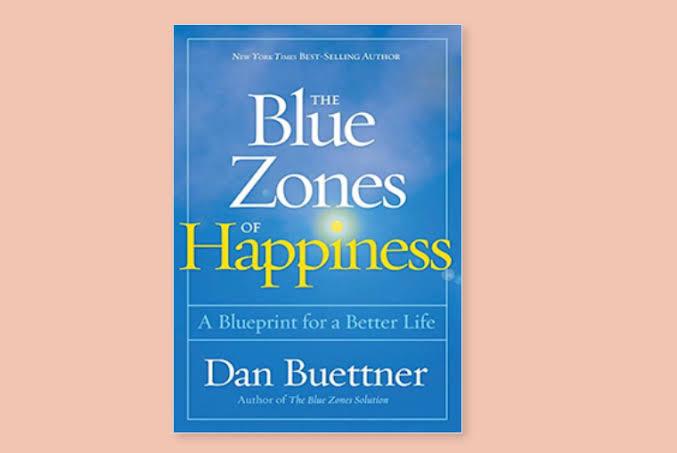“The Blue Zones” Book Summary | Quick Reads For Busy Minds epi 6
Welcome to “Quick Reads for Busy Minds,” a blog series tailored for the vast and bustling community of individuals with limited time but an insatiable thirst for knowledge. In each article delight, we’ll unravel the essence of a thought-provoking book, distilling its key takeaways into a concise 10-minute read. Whether you’re a professional navigating a hectic schedule or someone seeking intellectual nourishment on the go, this series aims to provide you with insightful summaries that capture the heart of each book, empowering you to absorb wisdom in a fraction of the time. Episode 6 of the series presents “The Blue Zones” Book Summary, where the author Dr. Dan Buettner outlines the longevity lessons learned from centenarians in the Blue Zones®.
Today’s Book: The Blue Zones by Dan Buettner
“The Blue Zones” Book Summary | Key Lessons & Insights
Blue Zones are the areas in the world where people get oldest and stay healthiest
The 5 Blue Zone regions are: Sardinia (Italy), Okinawa (Japan), Loma Linda (California), Nicoya (Costa Rica) and Ikaria (Greece).
In Blue Zones®, more people reach 100 years old and stay active in their 80s and 90s without facing common diseases seen elsewhere. Dan Buettner’s book shares insights from their research, showcasing how these communities live, think, and engage with each other. Along with his team of researcher’s, Dan determined that the people in each of these places have nine attributes in common with each other that are associated with their impressive longevity
Natural Movement
In Blue Zones, people don’t rely on intense workouts; instead, they naturally move a lot in their daily lives. They garden, walk, and use their bodies for transportation. The lesson for us is to get up from our desks and evaluate how we can add more movement into our lifestyle , a walk during lunch or perhaps an outdoor hobby.
Purpose
In the places where people live the longest, they understand the importance of having a purpose beyond themselves. In Okinawa, they call it “Ikigai,” and in Nicoya, it’s known as “Plan de vida,” both meaning “Why I wake up in the morning.” Many of us have lost sight of our purpose, which can harm our health.
Down Shift
Dan Buettner’s term “Down Shift” refers to how the people of the Blue Zones manage stress. Each culture addresses stress uniquely. Okinawans take time each day to do a sort of meditation to remember their ancestors. Ikarians prioritize naps These practices highlight the importance of intentionally creating moments of relaxation and introspection in daily life.
80% Rule
In terms of the 80% rule, Okinawans have a mantra that is said before meals that reminds them to stop eating when they are 80% full. They know that ceasing to eat before they are completely stuffed could be the difference between staying at a healthy weight and gaining unnecessary weight
Plant Slant
It’s not surprising that the world’s longest-living people follow predominantly plant-based diets, with 95 to 100% of their dietary intake coming from plants. Their staples include whole grains, nuts, and tubers, while meat is consumed sparingly, averaging only about five times per month in Blue Zones. Fish is enjoyed about twice per week. Beans, such as fava, black, soy, and lentils, are primary components of centenarians’ diets, showcasing the health benefits of plant-based eating for longevity.
Wine at 5
In the Blue Zones, particularly in places like Ikaria, Sardinia, and Nicoya, moderate consumption of wine with friends and family is a common practice that contributes to overall well-being. More surprisingly, in these communities, moderate drinkers outlive nondrinkers, but consumption is moderate at 1 to 2 drinks per day. At around 5 p.m., many residents gather to enjoy a glass of wine together, often as part of social gatherings or relaxed evenings.The moderate intake of wine, particularly red wine, has been associated with various health benefits, including improved heart health and longevity, when consumed as part of a balanced lifestyle.
Belong
Most centenarians interviewed by Buettner belong to a faith-based community, regardless of denomination. What matters is the support they receive from their community. They prioritize family by keeping older relatives at home and committing to one life partner. Being part of supportive social circles heavily contributes to their long lives.
Loved ones First
In Blue Zones, family connection is key. Children often care for aging parents/grandparents, and long-term relationships with one partner are common. Spending time with family, especially children and grandchildren, is normal, often living nearby. Also creating a close-knit “friends are family” group have a positive impact on well-being for long term.
Right Tribe
In each community there is a support system, meals are prepared together, time is spent together, and communities are often active together. Building a supportive community is essential, just like the proverbial “it takes a village.” Despite our busy lives, there are numerous opportunities to find like-minded individuals and create your tribe. From monthly vegan potlucks to wellness events, hiking clubs, yoga groups, and running clubs, there’s something for everyone. Take the time to seek out your community, and if you can’t find one, consider building one yourself.
Final Takeaway | “The Blue Zones” Key Insights
Adopting 9 practices mentioned in above “The Blue Zones” Book Summary can significantly enhance both longevity and quality of life. The Blue Zones remind us that small changes in daily habits and mindset can lead to significant improvements in overall quality of life and longevity. By following in the footsteps of those in the Blue Zones, we strive to lead healthier, happier, and more vibrant lives.
Get your copy right now ; https://amzn.in/d/dPn0CaH
Read also : “The ONE Thing” Book Summary | Quick Reads For Busy Minds epi 5 https://thebrightdelights.com/the-one-thing-book-summary-quick-reads-for-busy-minds-epi-5/
